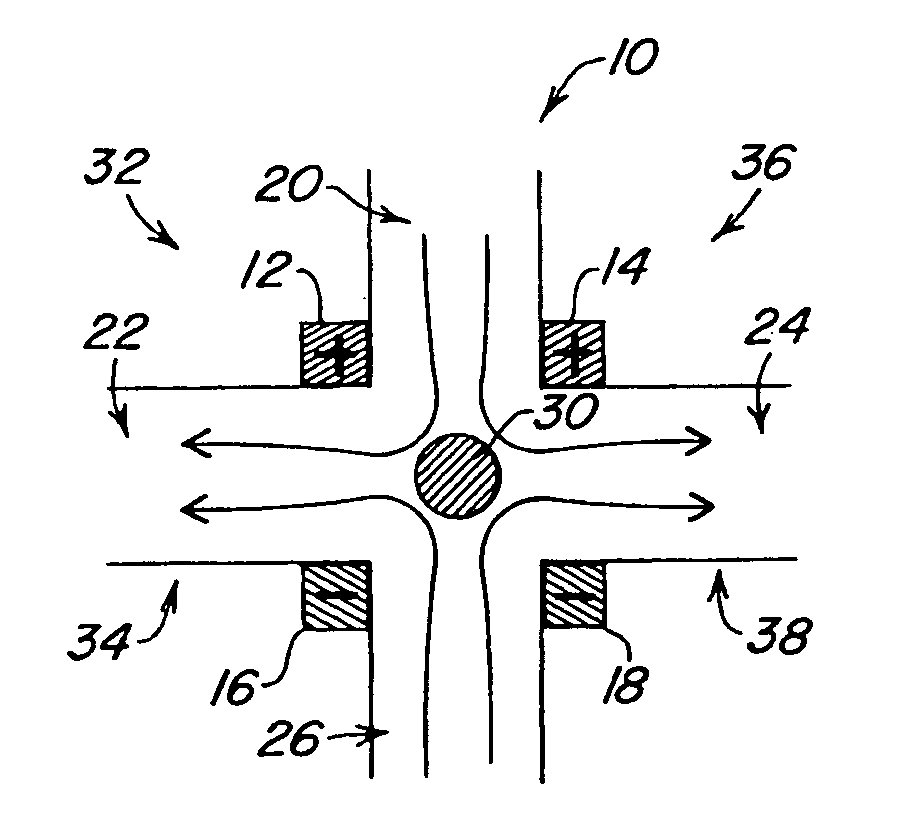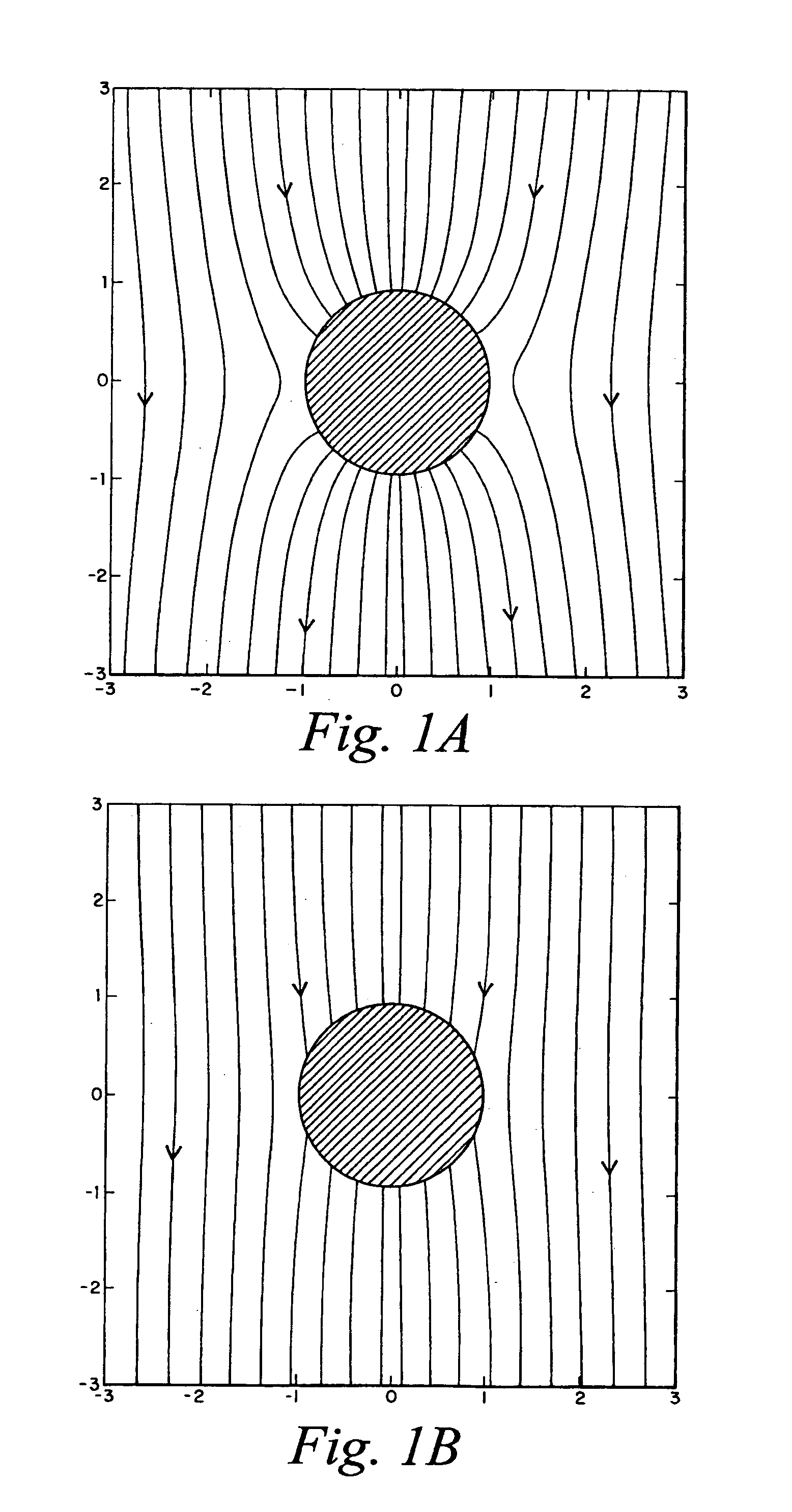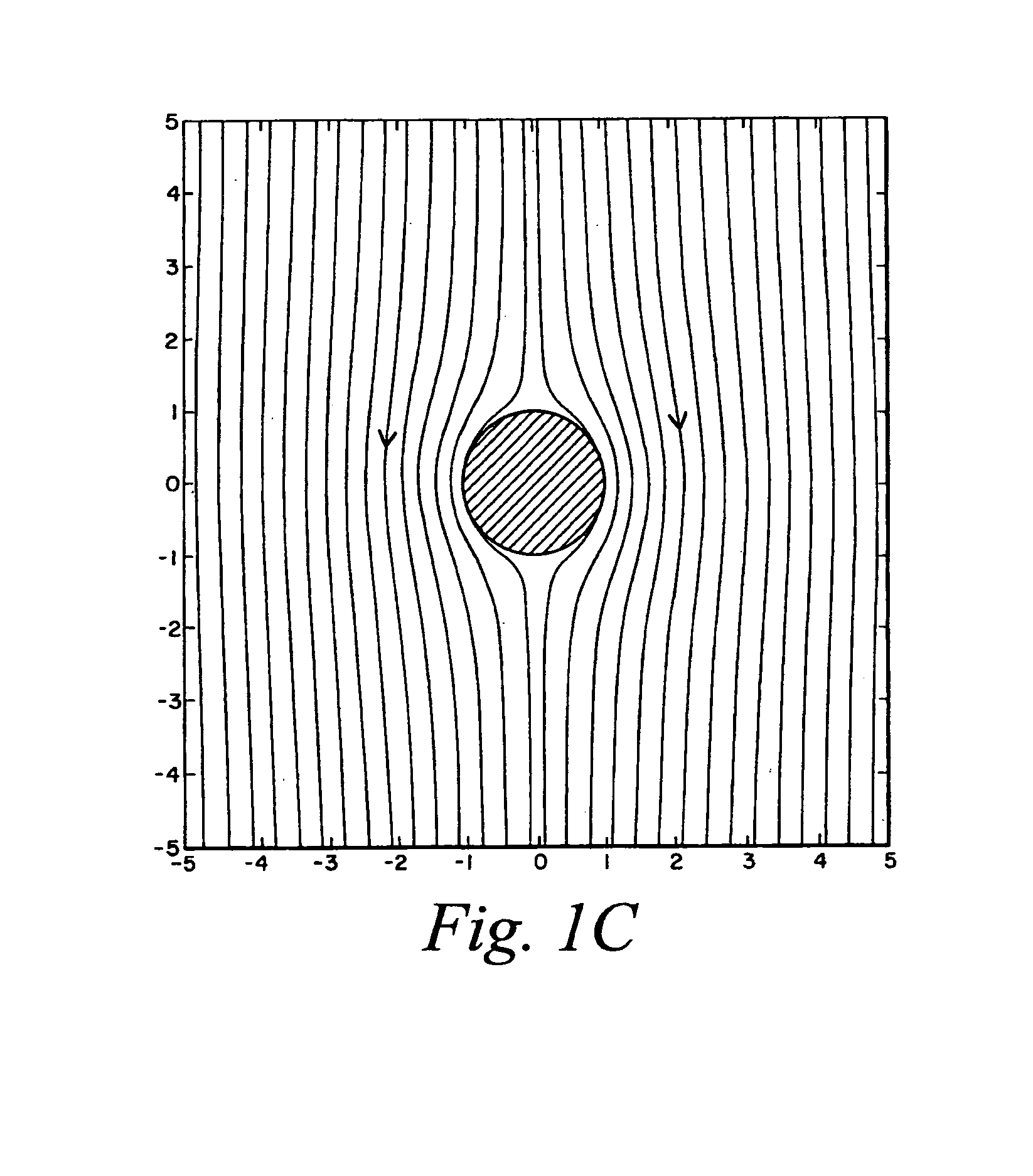Microfluidic pumps and mixers driven by induced-charge electro-osmosis
a microfluidic pump and electro-osmosis technology, applied in the field of microfluidics, micrototalanalysis systems (tas), microelectromechanical systems, can solve the problems of irreversible failure, microfluidic devices employing dc electric fields, and typically take from seconds to minutes,
- Summary
- Abstract
- Description
- Claims
- Application Information
AI Technical Summary
Benefits of technology
Problems solved by technology
Method used
Image
Examples
Embodiment Construction
[0022]FIGS. 1A–1C are schematics of the evolution of an electric field around a solid conducting cylinder immersed in a liquid electrolyte, which illustrates the basic physical mechanisms underlying this invention. Just after an electric field is applied, it must intersect a conducting surface at right angles, as shown in FIG. 1A. Mobile ions in the liquid electrolyte are driven along electric field lines—positive ions in the direction of the field, and negative ions opposite the field direction. At the conductor / electrode surface, the field lines terminate, causing ions to accumulate in a small ‘diffuse layer’ and inducing an opposite ‘image charge’ in the conductor. From the geometry of the field lines, one can see that positive ions accumulate around the side of the conductor nearest the field source, on the top half of the cylinder in FIGS. 1A–1C, and negative ions around the side nearest the field sink. This induced-charge ‘diffuse layer’ grows, gradually expelling field lines,...
PUM
| Property | Measurement | Unit |
|---|---|---|
| Flow rate | aaaaa | aaaaa |
| Polarity | aaaaa | aaaaa |
| Radius | aaaaa | aaaaa |
Abstract
Description
Claims
Application Information
 Login to View More
Login to View More - R&D
- Intellectual Property
- Life Sciences
- Materials
- Tech Scout
- Unparalleled Data Quality
- Higher Quality Content
- 60% Fewer Hallucinations
Browse by: Latest US Patents, China's latest patents, Technical Efficacy Thesaurus, Application Domain, Technology Topic, Popular Technical Reports.
© 2025 PatSnap. All rights reserved.Legal|Privacy policy|Modern Slavery Act Transparency Statement|Sitemap|About US| Contact US: help@patsnap.com



